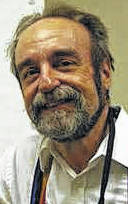
In 1633, the Catholic Church’s Inquisition convicted Galileo Galilei of violating instructions by Cardinal Bellarmine in 1616. He had been ordered to cease public support of Copernicanism, the belief that the sun, and not the Earth, was at the center of the cosmos.
His 1632 book, “Dialogue Concerning the Two Chief World Systems,” violated Galileo’s promise and gravely insulted Pope Urban VII.
Galileo spent the next decade under house arrest, where he did groundbreaking work studying the mysterious force that we now call gravity.
Ultimately, Galileo’s conviction and punishment are not about whether the Earth was at the center of the cosmos. Church officials understood they would eventually have to accept the non-centrality of our planet. But they needed time to prepare their parishioners for the drastic change in worldview and the apparent contradiction with Scripture.
Several Biblical passages imply that the Earth is at the center of the cosmos. For example, during a battle with the Canaanites, Joshua orders the sun to stand still to prolong the fight. The warrior-prophet does not request the Earth to stop rotating or revolving. Clearly, he thinks that the sun is moving.
Contemporary society measures time in minutes and days. The church takes a longer view. They had been teaching the Earth-centered universe for 1,500 years before Copernicus came along. They had already put Galileo off for decades. They would require decades more to prepare the public.
Galileo’s case provides an excellent example of the church’s attitude toward change and time. It wasn’t until 1979 that Pope John Paul II created a commission to investigate Galileo’s conviction. Thirteen years later years, in 1992, the Pope finally reversed Galileo’s conviction 360 years after the Inquisition punished him with house arrest.
The conviction was ostensibly about Galileo’s disrespect for Cardinal Bellarmine’s 1616 orders and his apparent disrespect for the church’s highest official.
However, the commission’s report was far more interested in the Inquisition’s activities than Galileo’s condemnation. They went out of their way to forgive the Inquisitors for their “subjective error in judgment, so clear to us today.” They secondarily commented that Galileo had “much to suffer” from their decision.
Galileo’s telescopic evidence did not provide definitive proof for Copernicanism. The moons of Jupiter showed that Jupiter had satellites like Earth, but that’s all it proved.
The phases of Venus could be explained with a model created by Kepler’s mentor, Tycho Brahe. He suggested that Earth was still at the center but that the sun orbited Earth and all the rest of the planets circled the sun.
Besides, Copernicus and Galileo were incorrect on at least two crucial counts. The sun is not the center of the cosmos. It is only one of 200 or so billion stars in the Milky Way, which, in turn, is one of trillions of galaxies in the cosmos. In Galileo’s mind, the cosmos remains small.
More importantly, Copernicus and Galileo were wrong about the orbits of the planets. Aristotle had claimed that objects orbited Earth in perfect circles and that the speed of their motion never varied, a premise that astronomers call “uniform circular motion.”
Neither Copernicus nor Galileo rejected that belief. As a result, Copernicanism was no better at predicting the position of the planets in the sky than the Earth-centered idea. In 1609, Johannes Kepler developed the mathematical and geometric model that solved the inherent problems in both systems. However, Kepler’s work is written in Latin and is mathematically dense. As a result, it was largely ignored.
According to Kepler, the planets orbit the sun in slightly stretched-out circles called ellipses. As they get closer to the sun, they speed up. As they get farther away, they slow down. The Keplerian system was better at predicting the positions of the planets than the Copernican model.
Galileo’s most important contributions came during his house arrest. Feed Galileo’s data about falling objects into Newton’s fertile mind, and out pop Newton’s laws of motion and gravity. As science writer Chet Raymo writes, feed Newton’s laws into our human desire to explore and out pops Neil Armstrong standing on the moon.
On a cultural level, Galileo’s trial was the opening salvo of the battle between religious faith and systematic scientific observation. More on that next week.
Tom Burns is the former director of the Perkins Observatory in Delaware.

